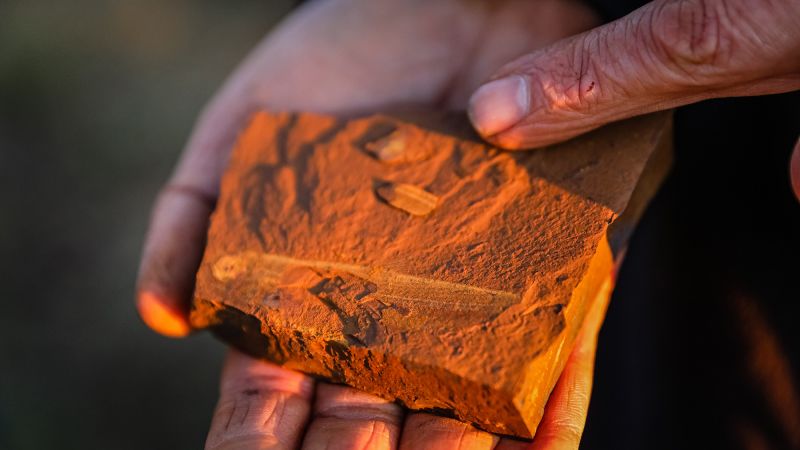In a remarkable paleontological discovery, researchers have identified a previously unknown fish species from Australia, which dates back approximately 16 million years to the Miocene Epoch. This newfound species, named *Ferruaspis brocksi*, was uncovered at the McGraths Flat site located in central New South Wales. The significance of this finding is heightened by the fact that researchers were able to detect the fish’s last meal, revealing crucial dietary insights that add layers to our understanding of ancient ecosystems.
The fossilized remains of *F. brocksi* were located in goethite, an iron-rich mineral renowned for its capacity to preserve organic structures with extraordinary detail. As per a study published in the Journal of Vertebrate Paleontology, the exceptional fossilization conditions allowed researchers to explore not only the fish’s physical features but also its soft tissues and pigmentation patterns. Dr. Michael Frese, a key figure in the study from the University of Canberra, remarked on the impressive preservation of fossils from McGraths Flat, noting the rarity of such detailed color information in fish fossils, which opens new avenues for research into their behavior and ecology.
Beyond identifying this distinct species, the research team unveiled vital evidence of Osmeriformes, a taxonomic group that encompasses modern graylings and smelts, in Australia for the first time. Prior to this study, scientists had only hypothesized the timeline of smelts’ arrival in Australia, owing to a scarcity of fossil evidence. This discovery contributes significantly to our understanding of the region’s ancient aquatic ecosystems, pushing boundaries and challenging earlier beliefs about the geographical distribution of these fish ancestors.
Utilizing advanced microscopy techniques, the scientists examined the stomach and intestinal content of *F. brocksi*. They discovered that the fish primarily dined on phantom midge larvae—almost transparent insect larvae—as well as insect wings and even small bivalves. Dr. Anthony Martin, an expert in environmental sciences from Emory University, emphasized that knowing the fish’s diet could help reconstruct food chains and webs prevalent in their original habitats, effectively bridging the gaps in our understanding of ecological interactions at the time.
Interestingly, among the specimens studied, one fish was found with a freshwater mussel attached to its tail fin, an uncommon find that raises questions about the environmental conditions of the fossil site. Dr. Frese noted that the lake sediments where *F. brocksi* was found could not have provided an environment conducive to the mussel’s life cycle, suggesting a possible connection to nearby water sources. Furthermore, the analysis of stomach contents indicated the timing of feeding habits. Many extant species of phantom midge larvae typically avoid lakes populated by fish, indicating that *F. brocksi* likely preyed on these larvae during nocturnal hours as they migrated from sediment to the water surface.
One of the more surprising aspects of the fossils was the discovery of melanophores, or pigmented cells, which shed light on the coloration of the fish. The fossils indicated that *F. brocksi* exhibited a slender physique akin to modern-smelt species and displayed evidence of countershading—a coloration strategy employed by many aquatic creatures to evade predation. This feature, along with the presence of stripes along the fish’s body, may imply a behavior commonly seen in contemporary fish, where they gather in groups, further enhancing their survival chances in the historical ecosystem.
Historically, the region where *F. brocksi* was found differs vastly from its current landscape, which is primarily characterized by plains and plateaus. During the Miocene Epoch, central New South Wales was enveloped in lush rainforests, providing a rich habitat for various species. The findings suggest that *F. brocksi* might have spent its entire life in freshwater, unlike many of its surviving relatives that inhabit marine environments today. Dr. Frese points out that while this study primarily focuses on this single species, it forms part of a larger narrative that offers insights into the ecosystem that once thrived in the area, showcasing the intricate tapestry of life during that time, further encapsulated by ongoing fossil excavations.












